Work Visas For The United States Types And Application Tips

Understanding work visas for the United States is important when planning to work in the United States as a foreign worker, and choosing the appropriate work visa is crucial too.
This guide cuts through the complexity, delivering straightforward information on U.S. work visa types – H-1B, L, O, and more—and providing actionable application advice for work visas for the United States. This article will help you with information to meet the requirements and successfully navigate the application steps ahead.
Key Takeaways
- Work visas for the United States facilitate temporary employment for foreign nationals, contributing to economic growth and infusing specialized skills into the labor market.
- Work visas for the United States come in various categories like H-1B for specialty occupations, L for intra-company transferees, and O for exceptional abilities, each with specific eligibility criteria.
- The application process for U.S. work visas involves obtaining a job offer, an approved petition by U.S. Citizenship and Immigration Services, securing necessary documents, payment of fees, and attending a visa interview.
Understanding US Work Visas
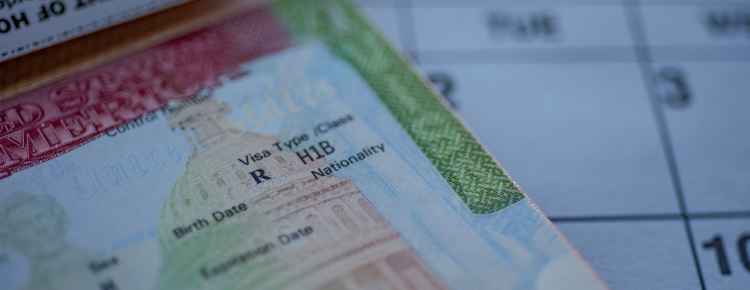
Work visas for the United States is a nonimmigrant visa that permits foreign nationals to enter the United States for employment for a fixed period (months or years). This temporary employment opportunity is not considered permanent or indefinite, keeping the U.S. labor market flexible and diverse.
The primary purpose of these visas is to allow foreign nationals to engage in employment in the United States, contributing to the country’s economic growth and international competitiveness. These work visas are a boon to the U.S. economy, infusing it with specialized skills and talents from around the globe. From H-1B visas for specialty occupations to L visas for intracompany transferees, the U.S. embraces professionals from diverse fields, fostering a rich, multicultural work environment.
As an employer abroad continuously seeks top talent, these visas provide a valuable opportunity for both the U.S. and foreign professionals.
Categories Of Work Visas For The United States
We’ll now examine the different categories of work visas for the United States. Each category is designed based on the nature and duration of the work, ensuring that every potential employee has a suitable option. Be it temporary or seasonal work, these visas cater to a broad spectrum of employment opportunities.
H Visas: Professionals And Temporary Workers
The ‘H’ category of U.S. work visas often appeals to professionals and temporary workers. H-1B visas, for example, are earmarked for individuals working in a position requiring specialized knowledge, such as roles in specialty occupations that require a higher education degree or its equivalent. This category includes roles such as fashion models with distinguished merit and ability. It also covers certain government-to-government research and development projects.
The different types of work visas available include:
- H-2A visa: for temporary or seasonal agricultural work
- H-2B visa: for temporary non-agricultural workers when there is a peak load, intermittent, seasonal, or a one-time occurrence need
- H-3 visa: for training in any field excluding graduate medical education
I Visas: Foreign Press Members
The ‘I’ visa category is particularly suited to representatives of foreign media temporarily working in the United States. The primary purpose of this visa is to facilitate their profession while they engage in informational or educational media activities.
Keep in mind, however, that I visas aren’t suitable for those involved in commercial entertainment or advertising projects. Applicants must be involved in the news-gathering process, reporting on current events, and working for a media organization with a home office in a foreign country.
L Visas: Intra-Company Transfers
The ‘L’ visa category is tailor-made for temporary transfers within a company to a U.S. branch, parent, affiliate, or subsidiary. To be eligible for an L visa, an individual must have been employed by the same employer abroad for 1 year within the last 3 years and be transferred to the U.S. in a managerial or executive capacity, or specialized knowledge capacity.
Interestingly, organizations can use a blanket petition to establish the intracompany relationship in advance. This procedure enables them to transfer eligible employees to the U.S. more rapidly without individual petitions, making the process seamless and efficient.
O Visas: Exceptional Abilities Or Achievements
The ‘O’ visa category is exclusively for individuals with extraordinary and exceptional abilities or achievements in the same visa category fields. This includes:
- The sciences
- Arts
- Education
- Business
- Athletics
- Those with a record of extraordinary achievement in the motion picture or television industry.
To qualify for the O-1 visa, an individual must provide evidence of sustained national or international acclaim or a record of extraordinary achievement in the motion picture industry. It’s worth mentioning that O visas can be extended to include those who travel with a person of extraordinary ability or to their family members.
P Visas: Performers And Accompanying Personnel
The ‘P’ visa category is designed for individuals who have demonstrated a high level of skill or recognition in the fields of athletics, performance, or arts, as well as for staff who are essential to the execution of the performance.
R Visas: Religious Workers
The ‘R’ visa category offers a unique opportunity for non-immigrant religious workers to work for religious denominations or associated non-profits in the U.S..
TN NAFTA: Canadian And Mexican Professionals
The TN NAFTA work visa category is exclusively for qualified Canadian and Mexican citizens. It is a testament to the strong ties between these neighboring countries and the U.S. and facilitates the transfer of professionals across borders.
Applying For A US Work Visa
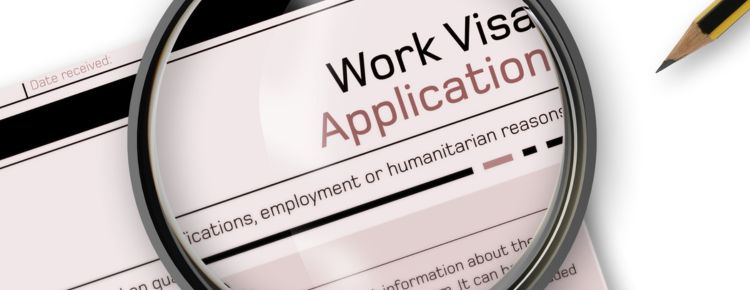
Having explored the various categories, we’ll now navigate through the application process for a U.S. work visa. From obtaining a job offer to filing a petition and attending an interview, navigating this process requires careful attention and meticulous preparation.
Preconditions For Obtaining Work Visas For The United States
Before starting the application process for an immigrant visa, it’s critical to familiarize yourself with the prerequisites for obtaining a U.S. work visa. A pivotal requirement is when USCIS approves your petition (an approved petition by USCIS)
USCIS is the abbreviation for the United States Citizenship and Immigration Services. It is responsible for overseeing lawful immigration to the United States. This petition must be filed by the prospective employer, affirming their intent to hire the foreign worker.
Labor certification approval from the Department of Labor is a significant precondition for certain work visa categories. This certification ensures that the employment of foreign workers does not adversely affect American workers.
Work Visas For The United States – Required Documents

Having met the prerequisites, you should then collate the required documents for your U.S. work visa application, which is essential before obtaining permanent residence. A primary requirement is a Valid passport that is valid for travel to the United States, with a validity period extending at least six months beyond the period of stay.
Additionally, when applying for a U.S. work visa, you will need to provide the following documents:
- Proof of payment for the application fee, which currently stands at $190, and the visa issuance fee
- A U.S. visa photo
- Evidence of strong ties to your home country
- Any additional documents that establish your qualification for the visa category
These documents are mandatory for your application.
Work Visas For The United States – Application Procedures
The application procedures for a U.S. work visa include:
- Completing the Online Nonimmigrant Visa Application (Form DS-160)
- Paying the non-refundable visa application fee
- Before scheduling an interview, you will need the Receipt Number from the approved Petition for a Nonimmigrant Worker (I-129 Form) filed by your employer.
Once these steps are completed, you can schedule your visa interview. The interview is a crucial part of the process, and you’ll be required to:
- Answer the consular officer’s questions
- Partake in ink-free digital fingerprint scans
- Provide any extra documents that establish your visa category qualification.
Rights And Responsibilities Of Temporary Workers
As a temporary worker in the U.S., you must be aware of your rights and responsibilities. Under the William Wilberforce Trafficking Victims Protection Reauthorization Act, temporary workers have protection against human trafficking and labor abuses.
Temporary workers can report violations or abuses and seek assistance without risking retaliation. The National Human Trafficking Hotline provides a 24/7 support service for workers facing unsafe or exploitive conditions and offers help in multiple languages.
Extending Your Stay And Changing Visa Status
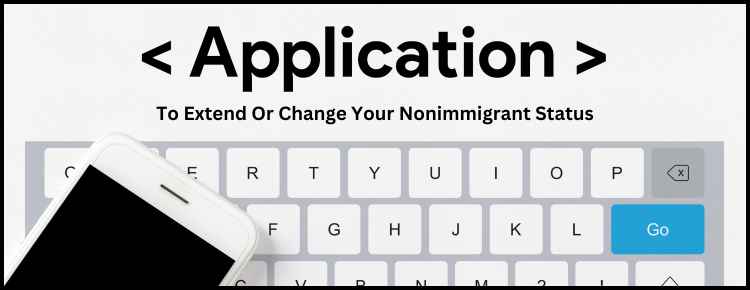
What should you do if you wish to prolong your stay (date indicated on your admission stamp or Form I-94) or alter your nonimmigrant status in the United States? To achieve this, you should submit Form I-539, Application to Extend/Change Nonimmigrant Status with USCIS before the expiration of your authorized stay.
It’s recommended to file Form I-539 at least 45 days before the expiration of your current stay or as soon as the need to change or extend your status is known. However, be aware that certain nonimmigrant categories are not eligible to extend or change their status.
Employment Authorization Document (EAD)
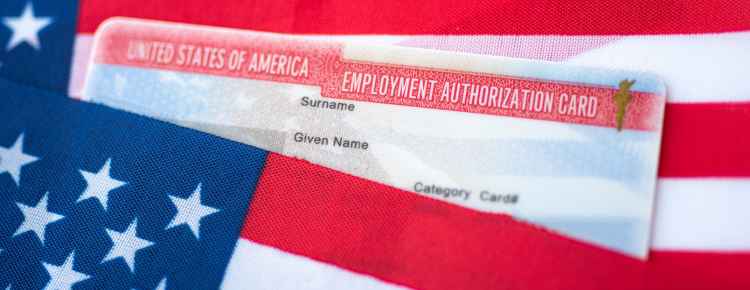
The Employment Authorization Document (EAD) is a crucial permit that proves an individual’s eligibility to work legally in the United States. To obtain an EAD, individuals must file Form I-765, Application for Employment Authorization, with USCIS and provide necessary documentation.
Various nonimmigrants in the U.S., including those applying for permanent residency and certain family members of individuals with lawful nonimmigrant status, may apply for an EAD. It’s important to note that applying for an EAD requires a fee of $410 and an additional $85 for biometrics as needed.
Permanent Worker Visas: EB-1 To EB-5
Moving on, we’ll examine the EB visa categories for permanent workers in the United States. The EB-1 visa category is reserved for individuals with extraordinary abilities, outstanding professors or researchers, and certain multinational executives or managers.
On the other hand, EB-2 immigrant visas cater to professionals with advanced degrees, individuals with exceptional ability, and those whose work benefits the U.S. national interest. The EB-5 Immigrant Investor Program visas are designed for individuals who invest in a new U.S. enterprise that creates jobs for American workers.
Student And Exchange Visitor Visas
The U.S. also provides for students and exchange visitors through dedicated visa categories. The F-1 visa is for academic students, M-1 is for vocational students, and J-1 is for participants in educational or cultural exchange programs, including reciprocal exchange program opportunities.
- F-1 visas allow academic students to engage in Optional Practical Training (OPT), providing work opportunities in their field of study both during and after their academic program.
- M-1 visas cater to vocational or nonacademic programs, and
- J-1 visas are designed for individuals involved in educational or cultural exchange programs.
Short-Term Business Visas
The Business Visa, specifically the B-1 visa, is the ideal choice for short-term business activities. This visa is designed for individuals visiting the U.S. for activities such as negotiating contracts or attending conventions.
The Visa Waiver Program is another option that allows eligible travelers, including visa holders, from designated program countries to enter the U.S. for up to 90 days for business or tourism without a visa. However, certain conditions such as having a biometric passport apply.
Summary
Navigating the U.S. work visa landscape can be a complex task, but with the right information and understanding, it’s a manageable one. It’s crucial to choose the right visa category, meet the necessary preconditions, gather the required documents, and follow the correct application procedures. Remember, the United States is a land of opportunities, and the right work visa is your golden ticket to explore these possibilities.
Frequently Asked Questions
Is it difficult to get a work visa for the USA?
Obtaining a work visa for the USA can be complex and time-consuming, as it requires legal expertise and usually a job offer with employer sponsorship.
What is the best work visa for the USA?
The O-1A visa for individuals with extraordinary abilities is considered one of the best work visas for the USA due to its eligibility criteria and benefits. Other options include the H-1B, L-1, and E-1/E-2 visas, but the O-1A visa stands out for its unique requirements and advantages.
What is the main purpose of a U.S. work visa?
The main purpose of a U.S. work visa is to enable foreign nationals to work in the United States for a specific duration. It’s designed to facilitate temporary employment opportunities for individuals from other countries.
What are the preconditions for obtaining a U.S. work visa?
To obtain a U.S. work visa, you need an approved petition by USCIS, labor certification approval from the Department of Labor for certain categories, and a confirmed job offer from a U.S. employer.
Are there any legal protections for temporary workers in the U.S.?
Yes, temporary workers in the U.S. are protected under the William Wilberforce Trafficking Victims Protection Reauthorization Act against human trafficking and labor abuses.
Related Blog
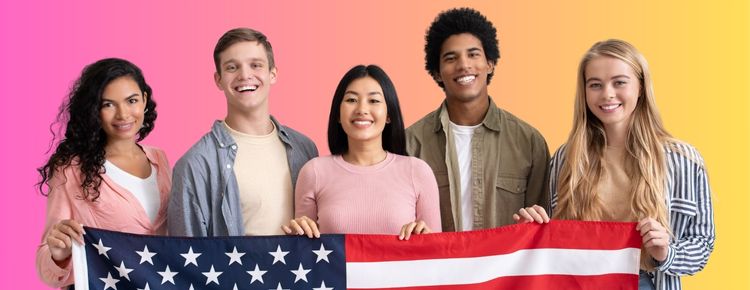
Guide To Essential Immigration Terms
Understanding U.S. immigration can be complex, with a wide range of immigration terms and concepts that are crucial to navigating the system. Whether you’re an immigrant, a professional, or simply interested in the topic, familiarizing yourself with these terms is essential. The United States Citizenship and Immigration Services (USCIS) administers the country’s naturalization and immigration […]

Navigating The I 539 Form For Nonimmigrant Status Changes
If you’re a nonimmigrant in the U.S. needing to extend or change your status, navigating the I-539 form is a critical step. This guide simplifies the application process, highlighting what you need to know to file successfully without risking your legal stay. Learn the essentials without the guesswork. Key Takeaways Understanding Form I-539: Purpose And […]

Parents Visiting Visa USA Application Process
Are you planning to invite your parents to visit you in the United States? Navigating the visa process can seem overwhelming, but with the right information and guidance, you can help your parents obtain their visitor visa with ease. This ultimate guide will provide you with a comprehensive understanding of the B1/B2 Parents Visiting Visa […]


